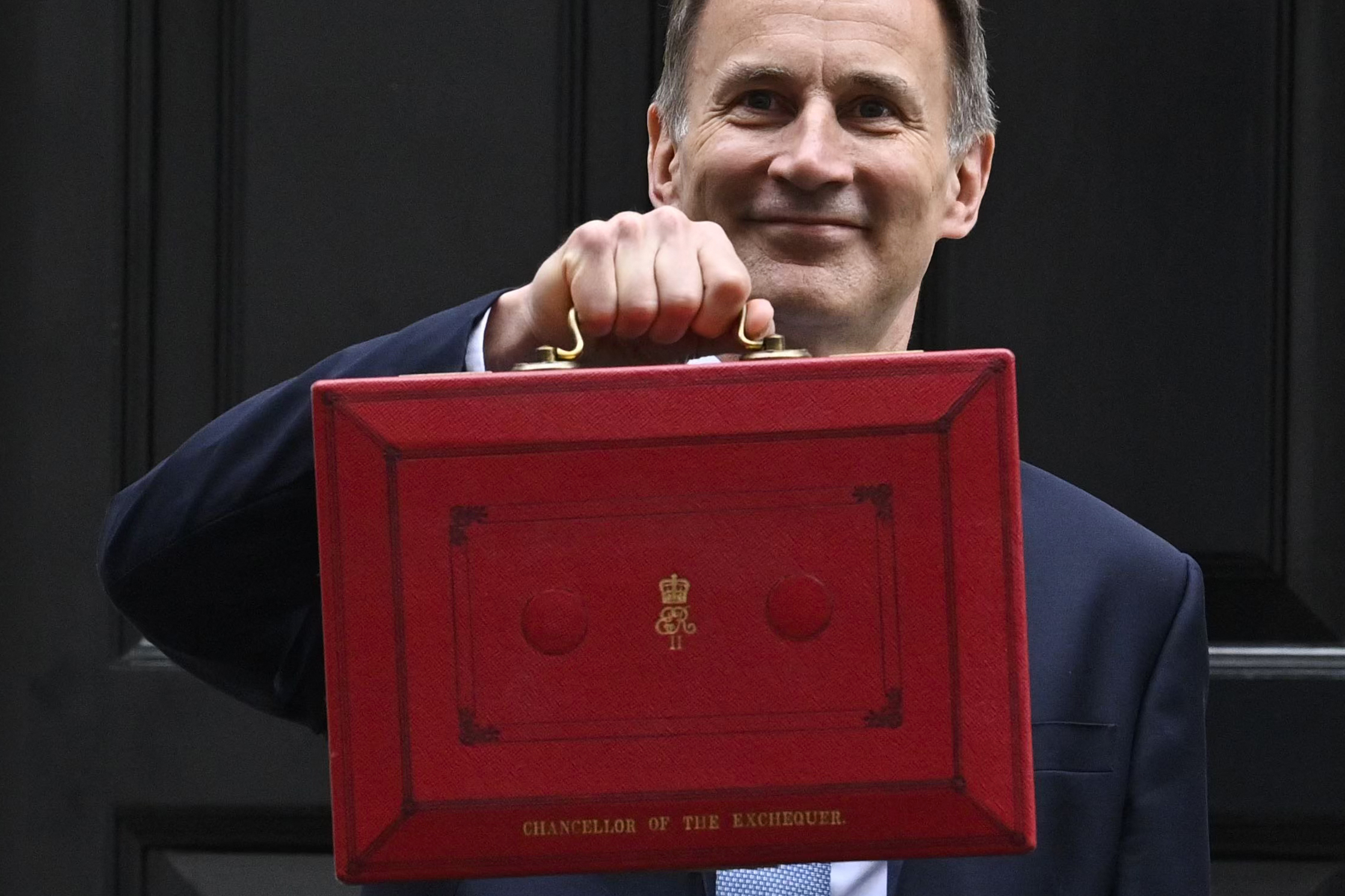A Guide for Accountants on Introducing R&D Tax Credits to Their Clients

At Oper Business Solutions, we are enthusiastic about R&D tax credits. It is our daily activity. We enjoy working with accountants to provide robust, maximised claims for their customers.
Client contentment and preservation are of great consequence for accounting firms, and we strive to elevate these relationships by providing our speciality of R&D tax credits. Our goal is to increase the value of your services to customers.
We provide our clients with the technical capacity, solid procedures, and advice on managing their records to ensure they are getting the most out of their R&D tax relief. Consequently, we aspire to help you feel more secure in recognising your client's R&D.
This article aims to assist you in determining the R&D that has been conducted by your existing customers, outlining the qualifications that may be overlooked by other people. Additionally, we provide you with tips on how to introduce the incentive to customers that you have never done so before and explain how an alliance with Oper Business Solutions could help you achieve extensive, optimised claims.
What criteria do I need to assess to determine if my customers qualify for R&D tax credits?
Your clients may be unaware that they qualify for R&D tax credits, or may have been misinformed by another advisor that their activities do not make them eligible. This is the primary impediment that must be overcome.
The HMRC's definition of R&D is extensive, so it can occasionally be difficult for companies to recognise it. This is because R&D is present in all industries and all sizes of business. If your client is developing products, services, or systems - or changing existing ones - it is likely that they are implementing R&D.
That's where we can assist. As an accountant, you typically possess all the required information to decide which of your customers can receive R&D tax incentives.
Establishing research and development activities
The biggest hurdle to clear is recognizing the R&D in your customers' operations. Being proactive here can safeguard your association. You should do your best to circumvent a situation where your client is approached directly by an R&D tax credit specialist or your direct rival to learn about the perks of submitting a claim.
When you are getting ready for the upcoming year-end for your clients' accounts or after you have read this article, it is advisable to review each of your customers and ask yourself the following questions:
- - Do they use personnel with specialised or technical abilities?
- - Are they active in a specialised or niche area?
- - Are they required to meet certain regulations?
- - Do they accept projects that involve taking a risk and going into uncharted territory?
- - Have they taken on tasks that were more costly than anticipated, or that they lost money on?
If any of these questions are answered affirmatively, then it is likely that the activities they are engaging in are eligible qualifications.
If desired, we can plan a scoping call with your customer. We can bring value to them by doing a research and development assessment. If you would like, you can be a part of this call. It typically lasts for fifteen minutes and serves to evaluate their eligibility and give a projected idea of their claim value.
A dramatic change from HMRC
HMRC has recently taken a more risk-averse posture and identified and stopped £469m in fraud related to R&D tax credit claims. This has caused a remarkable change in their attitude towards R&D tax credits, with a much closer examination being applied to the costs that meet the criteria. We recognize that you need to be sure your client's application is backed up and can withstand review from HMRC.
The Oper Business Solutions team and its R&D partners are comprised of chartered tax advisers, chartered accountants, engineers, legal professionals, and ex-HMRC staff members. Our rigorous procedures, which are based on HMRC policy awareness, make sure that all of your customers' expenses and activities are accounted for.
We ensure that any claim is maximised and secure from any potential risk. Should HMRC raise any queries, we will handle the matter as a part of our services.
Misconceptions exist in regard to R&D tax credits
Sadly, there are many misunderstandings related to R&D tax relief which can hinder businesses from taking advantage of the opportunity. Furthermore, these misconceptions prevent accountants from communicating R&D tax relief to their customers.
Below are a few of the more prevalent misconceptions concerning research and development:
"No ordinary tasks are eligible"
One's customers may assume that the duties they typically fulfil are not of the calibre that would classify as R&D; however, this might be incorrect. Construction is a prime example of this misconception.
"Your company needs to be lucrative"
It is possible for an enterprise that is not making a profit to apply for R&D tax credits.
"It would require too much of my time"
At Oper Business Solutions, our process is designed to be highly proactive, requiring only about a day's worth of total input from multiple departments for your client. We strive to minimize their time commitment.
"Achieving success with projects is essential"
It can be demonstrated that attempted projects demonstrate ambition to meet the criteria of qualifying research and development.
"I am unable to affirm if I have been provided a grant"
For certain situations, a client can claim both grants and R&D tax credits.
"Comprehending our work might be challenging for some - It's intricate"
At Oper Business Solutions, individuals with in-depth knowledge of specific industries and research and development backgrounds are appointed to correspond with the technical teams of clients to obtain the necessary data.
"No one can submit a request for subcontracting work"
It is still possible for your customer to make a claim if they have arranged for research and development to be done by a subcontractor.
Taking advantage of R&D tax credits is a gamble - there is the potential of being penalised or scrutinised by HMRC.
Since the year 2000, R&D tax credits have been available as a form of financing. HMRC is responsible for allocating funds to those businesses that have invested in innovative projects.
Introducing the concept of R&D tax credits to customers
When presenting R&D tax credits to your clients, it is important to consider their potential reactions. Some may be reluctant or suspicious, while others may be uninformed or simply unaware of the incentive.
This passage guides discussing the possibility with customers, including the steps, advantages, and what is required from them.
Points to underscore for those unfamiliar with R&D tax credits
Accountant partners may find it difficult to introduce R&D tax credits to a fresh client. To make things easier, we've provided a few helpful hints. As our sole focus is on R&D tax credits, we are confident that these tips will be of assistance.
Divided into three sections, these are the topics you should address with your client:
- Describe the advantages of R&D tax credits
- Supply your customer with sector-specific knowledge about R&D tax credits
- Make sure they understand why it is beneficial to collaborate with an expert
Explaining the advantages of R&D tax incentives
The government designed R&D tax credits to motivate corporations to experiment, take on risks and pursue difficult initiatives.
It is important to point out to clients the advantages of obtaining R&D tax credits:
- R&D tax credits provide a dependable source of funding for businesses annually and this helps with cash flow.
- - Most importantly, the support given enables further development. Many organisations use the funds for expanding their team, obtaining new equipment, and advancing their research and development to create a competitive advantage.
It won't take up a lot of your time, yet the rewards of filing a claim are quite substantial.
Helping your customers become familiar with R&D tax credits
It is imperative to inform your customer about R&D tax credits. You are aware of the approach that will best suit your customer. We are willing to collaborate with you to comprehend your customer and customize a plan to match them. Alternatively, if it is more suitable, we are ready to talk about it with you without using any names.
What Sets Oper Business Solutions Apart?
In the last two years, Oper Business Solutions and its R&D partners obtained over £120m for our clients.
We recognise that the connection between you and your client is essential; thus, you would be very cautious when it comes to introducing an outside party. We hold the same values. Our clients are the reason behind our work, so we would never jeopardize our relationship with them for any reason.
At Oper Business Solutions, we make sure that you have complete trust in our group and the excellence of our service. We are committed to customers, dedicating the necessary amount of time and a team of specialists from different disciplines.
Our staff are comprised of chartered tax advisers, chartered accountants, lawyers, and industry experts. We have a solid approach that ensures your client's R&D tax credit claim is maximized while shielding them from any potential risks.
Collaborating with Oper Business Solutions
Working together with Oper Business Solutions is an enjoyable experience. The team are incredibly knowledgeable and the services they provide are top-notch. It's a great pleasure to be able to access their expertise.
At present, we collaborate with over 100 accounting firms and we prefer to build authentic relationships with them. We believe that our partnership can be advantageous for you, enabling you to provide additional value to your customers.
We are amenable to accommodate your organization's needs in regard to R&D tax credit claims. Some accountants choose to handle some claims while asking us to take care of the more intricate ones.
Beginning a partnership with your accounting firm, we intend to illustrate our top-tier strategy and outstanding client service with the first client. No matter how it's initiated, we always value the customer relationship and offer outstanding service.
Points of Interaction
A single individual is assigned to you as a go-to for any inquiries about opportunities for your clients. This person will usually come to your workplace to gain more knowledge about your company.
By visiting, we can better understand how to assist you and your personnel. Additionally, we will keep you informed of the HMRC's current events, along with the most recent sector trends. Our partnership is a joint effort.
The opportunity to connect
Having contact time offers the chance for people to come together and interact. This provides an opening for a connection to form.
The extent of contact required is completely up to you. We can happily assess which of your customers would be eligible without you having to provide any of their personal information. Alternatively, we can also involve you in the process more extensively if that's what you prefer.
We are committed to building a strong relationship with our clients and part of that involves making resources available to improve their understanding. Our monthly accountants' newsletters and sector webinars offer valuable advice that practices can utilize. Additionally, we host events to share knowledge and facilitate discussion.
Should it be deemed suitable, a representative from our customer service division will be assigned to keep you updated on the status of your client's claims.
What one can anticipate
At our firm, we prioritize our accountant partnerships and provide unparalleled specialised expertise. Your contact person will always be a highly qualified professional. Typically, they will be a director, but at the minimum, they will be an Expert Tax Advisers with a reputation for skill and reliability.
When we have referred a client, we devote time to understanding the company and the complete breadth of their research and development projects. We have a strict approach with a built-in quality check. This leads to an R&D tax credit claim that is carefully crafted, completely maximised, and safe from any potential risks.
We urge you to provide us with your client's cost information, with their permission, of course. If you require further information about joining our accountant partnership programme, please register via the partner page.



